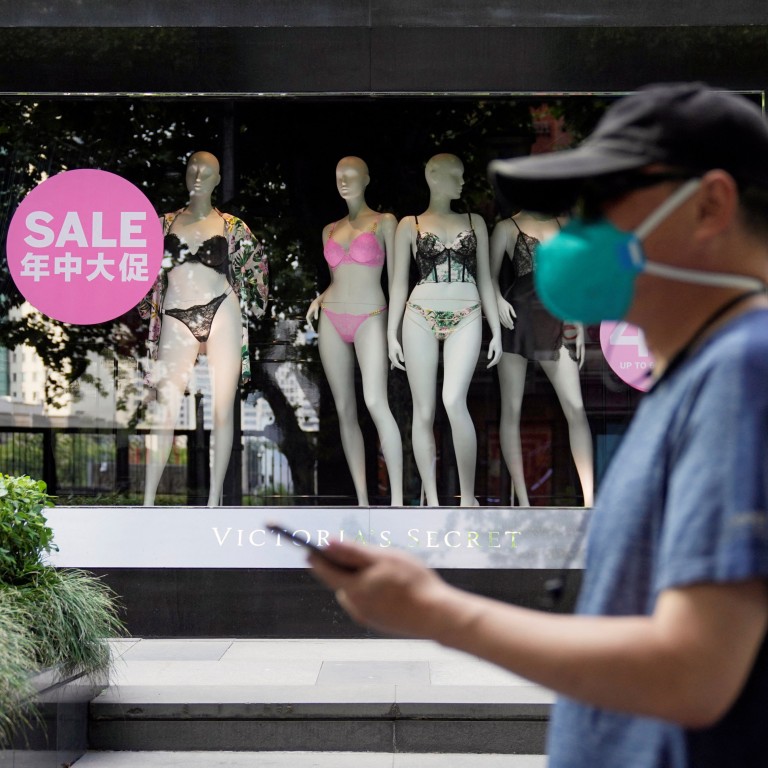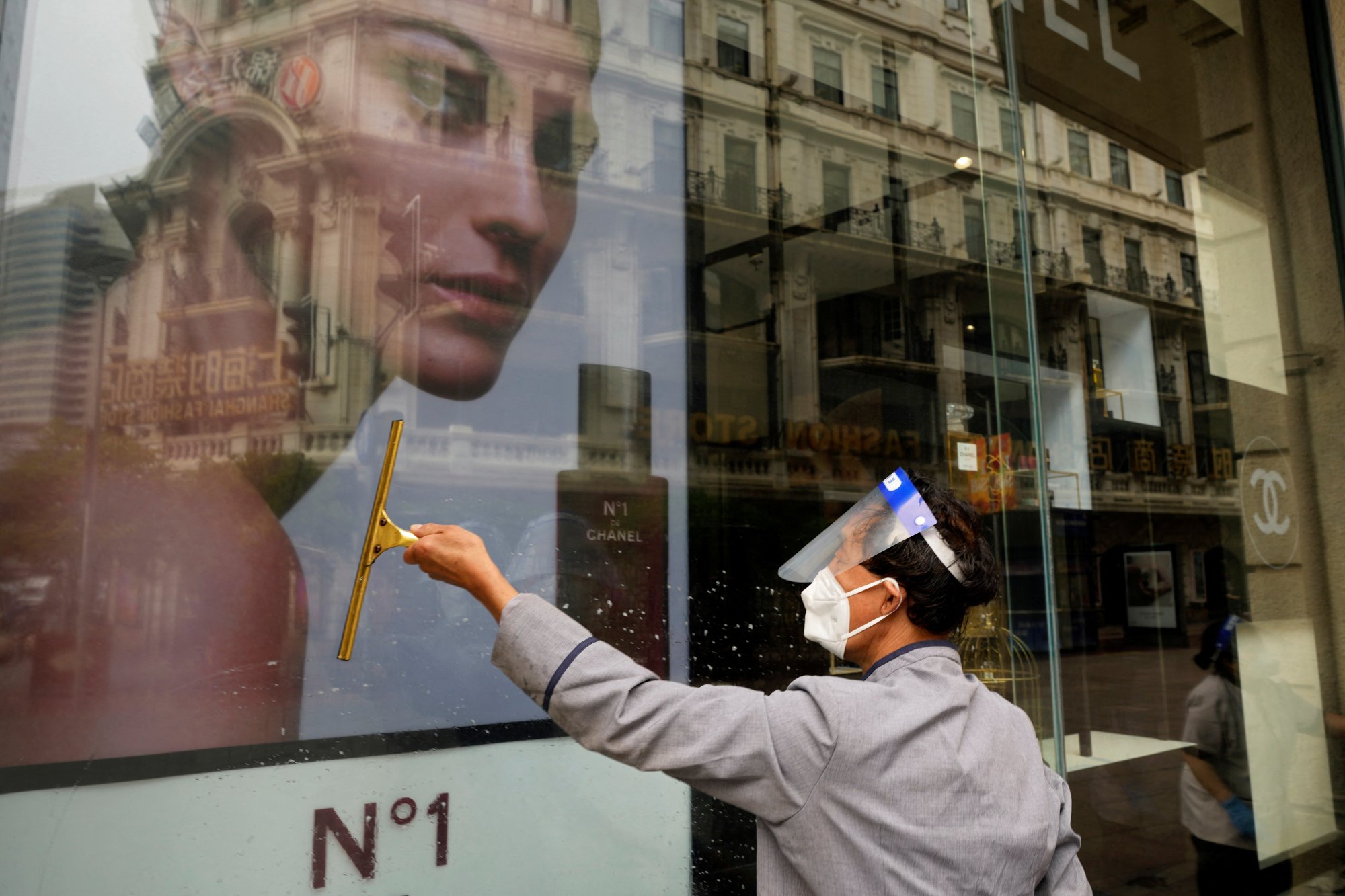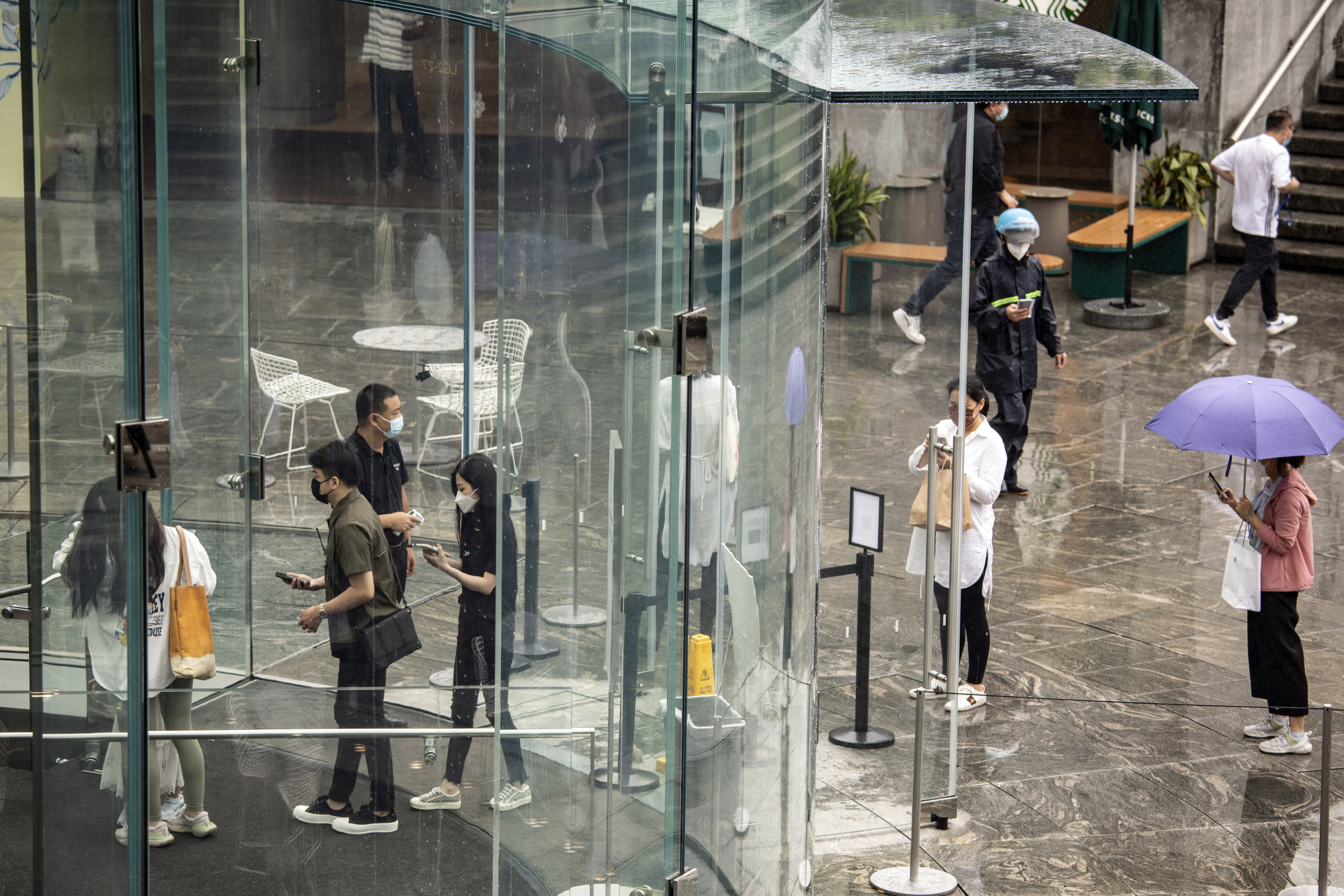
‘Everyone’s just bleeding’: unsold spring fashions in Shanghai pile up after lockdowns for Covid-19
- Top brands and retailers in China’s fashion capital have been left with unsold clothes and accessories following two months of Covid-19 lockdowns
- Other than in-store and online sales they have few options to clear stock. One insider says: ‘What are you going to do that’s not going to destroy your brand?
Almost a month after Shanghai lifted its strict Covid-19 lockdowns, fashion retailers are stuck with piles of unsold stock as cautious consumers stay away from the city’s glitzy shopping districts.
The city’s reopening in June saw a flood of goods move from warehouses to store shelves already laden with merchandise unsold during two months of lockdown. Normally around a fifth of all imported goods coming into China pass through Shanghai’s port.
Days after Covid-19 curbs eased, large “sales” signs went up across Shanghai, with retailers from Lululemon to Victoria’s Secret offering discounts to lure shoppers.

Even online retailers have struggled to clear a glut caused by lockdowns and supply interruptions.
“This affected us a lot,” said Josh Gardner, founder and chief executive of China market e-commerce partner Kung Fu Data, which manages online stores for 10 fashion brands, including G-Star Raw.
“In April, May on (China’s major e-commerce) platforms, there wasn’t a T-shirt to be found, we were sold out of summer stock and so was everyone else, there was just no product,” he said. “Now, everyone’s just bleeding and stuck with a lot of inventory they can’t move.”

China is a major market for personal luxury goods companies, with sales reaching US$74.4 billion in 2021, according to Bain.
In the event’s opening week, data from Tmall showed menswear sales had dropped 22 per cent and women’s wear was down 4 per cent, although activewear sales rose 26 per cent, possibly because of an increased focus on fitness during the lockdown. (Tmall is a unit of Alibaba, which owns the Post.)
Inventory can kill (and) some product categories have huge inventory to move
For now, some retailers are warehousing inventory and ordering less for the fourth quarter, when they will try to clear existing stock through November’s Singles’ Day.
“For the apparel category, because of the epidemic and sluggish consumption, there is a high level of inventory backlog of spring collections,” JD.com chief executive Lei Xu said following the online retailer’s first quarter earnings. “As a result, many factories are considering skipping their … summer collections.”
Flash sales specialist OnTheList, which sells luxury products for brands including Versace, Jimmy Choo and Lanvin at discounts of 70 per cent or more, reopened its physical Shanghai showroom last weekend with a sale of fashion from Salvatore Ferragamo.

The high-end Italian fashion brand and almost all other retailers in Shanghai closed stores throughout April and May. Salvatore Ferragamo declined to comment.
Jean Liang, OnTheList’s China managing director, said luxury brands are now more open to online sales, as well as offline sales, while cosmetics brands are proactively looking to hold sales to clear excess inventory.
“Before it was always us pitching asking them about their plans and now they approach us, which means they have inventory they need to clean out to have a healthy stock situation,” she said. OnTheList’s calendar of flash sales, which run every few days, is already booked through to September.

Sending products abroad to be distributed in Europe or America is another solution but is currently complicated by surging shipping and air transport costs, said Benny Wong, supply chain director at online wholesale marketplace Peeba.
“Now the main hurdle is transportation … that creates a big problem for the inventory owner,” he said. “Inventory can kill (and) some product categories have huge inventory to move.”
Weeks after reopening, retail sentiment is downbeat with Shanghai’s consumers yet to return to malls in significant numbers and footfall around half its usual levels in major downtown malls, according to retail staff.

People in Shanghai are reluctant to return to indoor public areas largely out of fear of being locked down again, as China’s dogged zero-Covid policies demand each time new infections emerge.
A continued ban on in-restaurant dining also means malls remain without their usual food and beverage attractions.
Across China, retail sales slipped 6.7 pre cent in May from a year earlier, extending the previous month’s 11.1 per cent decline, as a slowdown in the world’s second-largest economy discouraged consumer spending.
“In terms of inventory clearance there’s not really a good solution in China,” Kung Fu Data’s Gardner said. “I mean, what are you going to do that’s not going to destroy your brand?”

